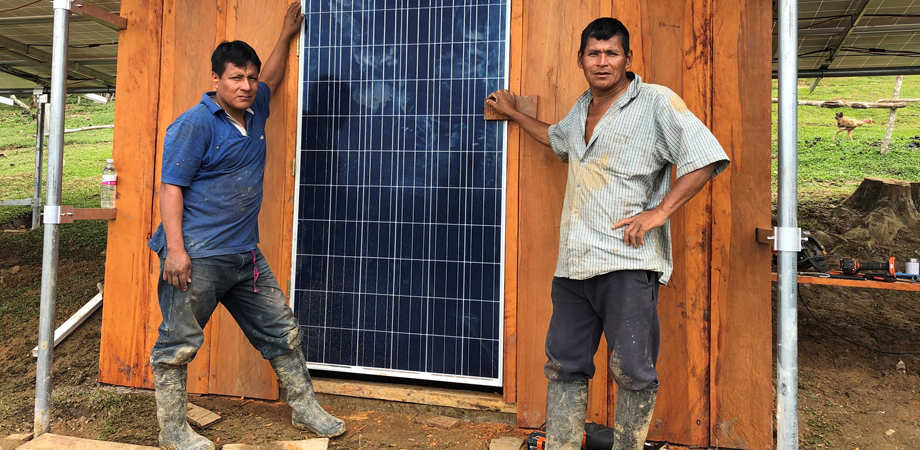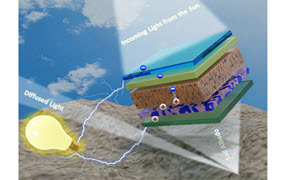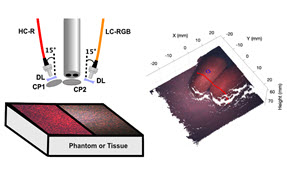Off the grid

Gripping a microphone, Apu Miguel stood on the concrete pad of a newly built open-air community center high in the mountains of Peru. "American brothers and sisters, as the leader of this community I want to thank you for the support you have given us on this project," said the compact muscular man, oblivious to the row of fidgeting boys seated at a table behind him. "We are really happy," Miguel added, "not just because of what this means to us, but what it means to our children."
The cause for celebration on this spring 2019 morning was the electrification of Miguel's tiny village, Mushuk Lamas, thanks to the installation of a photovoltaic (PV) battery microgrid that takes energy from the Sun and stores it in lithium-ion batteries so that the residents can have power around the clock. The electricity powers an internet tower, laptops, refrigeration for medicine—even flood lights for the soccer field. When volunteers first flipped the switch at the community center, Miguel exclaimed, "We have light!"
Microgrids—power installations that can run independently from the wider electricity grid—have been around for decades. Traditionally they were built in places where power lines could not easily go-islands, mountaintops-or where energy security is necessary, such as at hospitals or military bases. Until recently, however, most relied on fossil fuels such as diesel-powered generators.
But shipping fuel and then storing it in remote places is expensive, and as renewables have dropped in price in the past 20 years, more communities are integrating them into their microgrids. Now, experts say these sustainably powered systems—which can be solar alone, solar and wind, solar and hydrogen, or even, someday soon, solar and biogas-are poised to become more common both in developing countries where rural enclaves are hungry for electricity, and in developed countries where communities want better resilience from climate change-induced natural disasters that can wreak havoc on the larger electrical grid.
Two recent examples, says Jorge Elizondo, chief technology officer at Heila Technologies, were the recent prolonged power outages in Texas sparked by unusually cold weather that resulted in energy rationing, and in California wildfires that have led to blackouts.
"People are coming to see that the grid as we know it—it was good for when it was built, but it's 100 years old," says Elizondo, who started Heila, which makes a control system to manage renewable energy microgrids, as a doctoral student at MIT. "We need to do something better. We have to."
Still, alternative-energy powered microgrids are not without their challenges. Researchers say these systems must have complementary technology to overcome several key issues-the highly variable nature of sun, wind, and other renewable energy sources, and their low inertia and voltage instability.
Storing Energy for Cloudy Days
For example, when a community decides to add renewables to an already established system or, as in the case of Mushuk Lamas, create one from scratch, the first thing they must think about is how they are going to ensure a reserve of energy for cloudy or windless days. Some renewables systems retain a diesel generator for that purpose, but this can be problematic, says Mariko Shirazi, a professor of electrical engineering at the University of Alaska Fairbanks. Such generators must be left on all the time—to avoid a delay in power as the system switches from renewables to diesel—yet run at a very low setting. The former is expensive, and the latter is bad for the generator's motor.
Installing a battery is often a better solution, says Shirazi. "When the sun shines or the wind goes up, the battery absorbs power. When it's cloudy or the wind dies down, the battery injects power into the system."
But batteries also have drawbacks. They work well in the short term, but for longer-term energy storage, the number of batteries needed increases rapidly—and so does the price.
However, battery efficiency could be improved, and costs lowered, says Venkat Subramanian, an advanced materials science and engineering professor at the University of Texas at Austin. For example, most microgrid control systems are designed to draw only low amounts of power from the battery, to prevent it from overheating, which would reduce the battery's life and pose a safety risk. But that conservatism leaves a lot of potential power untapped.
A more dynamic control system, Subramanian says, would allow two-way communication between the battery and the controller. "So, the battery could say ‘No, I'm not going to take this charge from you today because if I take the charge, then I'm going to compromise on durability and so forth.'" To do that, he says, it's necessary to create more sophisticated physics-based algorithms for grid control, something that the current grid designers believe is too complicated. "We're working to change that," he says.

Solar panel arrays at Stone Edge Farm collect solar power into a self-contained microgrid that can feed back into the utility grid if needed. Credit: Leslie Lindell
Another option for energy storage is to convert it to hydroelectric. On El Hierro, one of Spain's Canary Islands, excess energy from wind turbines pumps water into a reservoir located at high elevation. When the wind dies down and the system needs more energy, the water is released into a lower reservoir. As the water moves from one reservoir to the other, it powers turbines that supply power to the system.
What is more, hydrogen electrolyzers can split water into oxygen and hydrogen, and the latter can be stored in fuel cells and tapped when needed. Elizondo says this type of hydrogen storage was included in his company's signature project-creating a microgrid control system for Stone Edge Farm, a Sonoma, California winery—because during the summer months the PV system was creating more energy than the system's batteries could hold. "You can use that excess energy in the winter," he says, "when solar production is about a third of what it is in the summer."
In addition to energy storage, microgrid designers must also consider how to maintain system strength, which is the ability of a grid to preserve the correct voltage waveform if something unexpected happens, such as a lightning strike or fallen transmission line. In the traditional grid, large spinning machines convert mechanical energy into electricity and help provide system strength through the concept of inertia.
At a coal-fired electricity plant, for instance, the burning coal creates steam that causes a turbine to spin and generate electricity. If the steam suddenly goes out, the turbines will keep turning for a while due to Newton's first law of physics. There is no electricity disruption for consumers, at least in the short term, and any shocks to the grid, such as a big step up in demand, get smoothed out because the system can easily speed up or slow down to absorb them.
"We've built our power system, hung our hat, on the physics of that inertia," says Shirazi. "Diesel generators, steam plants, nuclear plants, they're all using synchronous machines."
Renewables, however, do not have grid inertia, which makes maintaining system strength trickier. Some systems contain software programmed to mimic inertia. Others have what's called a synchronous condenser, which spins like a turbine but not for the purpose of generating electricity. Instead, it rotates to adjust conditions on the grid by generating or absorbing power-which is what keeps electrical voltage at a constant level and helps stabilize the system.
In time, researchers believe the controllers for renewables will be sophisticated enough—using algorithms, machine learning, and other computational techniques—to provde system strength without inertia. "A big topic of research right now is how do you get to a point where you no longer need synchronous machines?" says Shirazi. "Because as we move toward more and more renewables, it's starting to be possible to imagine that scenario."
Community Contributions
In addition to technical challenges, installing renewable-powered microgrids requires considerations such as anticipating and addressing community interest, as well as concerns about how a new system will be maintained. In rural Alaska, for example, four Native American tribes decided that the only way they could move from a fossil fuel-based microgrid to a renewable one was to teach themselves how to install and maintain one, leading to the formation of the Chaninik Wind Group in 2005.

Apu Miguel's daughter was the first to plug a device into the community's new microgrid, powered by solar. Credit: Twende Solar
Volunteers with the nonprofit Twende Solar, which helped bring electricity to Mushuk Lamas, always make sure to include representatives of local solar companies to help in their installation projects. "They speak the language, they can source products, and parts, and they have skilled experienced labor to fix these systems if anything goes wrong," says John Grieser, a renewable energy engineer in Portland, Oregon, who co-founded Twende and travelled to Peru to help install the Mushuk Lamas microgrid.
Grieser says that communities need to show a real interest in having a renewable microgrid system for it to succeed. He makes sure that when Twende approaches a community about installing a free solar-energy system that the residents contribute something in return. In the case of Mushuk Lamas, residents constructed a waterproof structure that holds the system's batteries and controller. They also helped wire the buildings that would have power—the community center, communal kitchen, and medical post—installing lights, switches, and outlets. In addition, they dug trenches to run power to those buildings.
Mushuk Lamas residents did not help with the installation of lights along the community's soccer field because Grieser and his volunteers wanted that to be a surprise. "We turned it on and made these big bright ‘Friday Night Lights' on the soccer field," Grieser says. "And it was like something out of a movie. It's raining and the chief, who's like 65 years old, is standing on the soccer field, water dripping from his face and he just looks up and yells out, ‘We have light!'"
Nancy Averett reports on science, technology, and the environment from Cincinnati, Ohio.
| Enjoy this article? Get similar news in your inbox |
|



